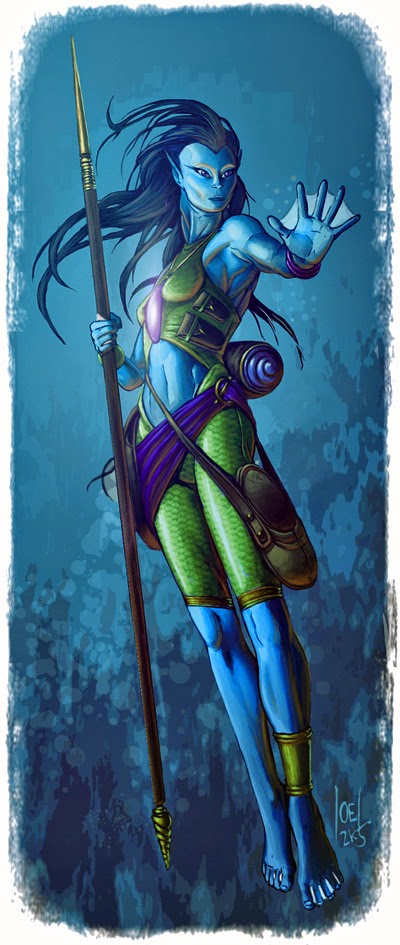In the early editions of D&D, humans were the foundation on which other races were compared. In other words, they were bland. Humans had no advantages or penalties (with the exception of being able to rise to any level in any class). Starting with 3rd edition, humans were instead described as the most flexible and adaptable of races, granting them a choice of ability scores increases, bonus feats, and training in a choice of skills. Humans went from the least played race to one of my favorites.
Humans in the 5th edition Player's Handbook continue what 3rd edition started, providing two options for your human characters.
- Gain +1 to all ability scores (as opposed to the standard +2 to one and +1 to a second of other races).
- Gain a +1 to two ability scores, proficiency in a skill of your choice, and a free feat at 1st level.
Using the second option gives you quite a few choices when creating characters from specific cultures. For example, if you want your human to have come from a race born on the open plains and commonly using mounts for transport and war, you could put your skill bonuses in Strength, Constitution and/or Wisdom, select proficiency in Animal Handling and take the Mounted Combatant feat. A human from a country bordering on demonic invasion, such as the Worldwound from Pathfinder's Golarion, may put their bonuses in Constitution, Intelligence and/or Wisdom, select proficiency in Arcana or Religion, and take the Mage Slayer, Magic Initiate or Ritual Caster feats. However, these options aren't limitless due to the small number of feats*.
Below you will find a variety of human subraces who hail from specific environments or countries with particular cultural or political leanings. These subraces are built using the half-elf as a guide, and the following abilities replace those of a standard human. Each subrace gains +2 to one ability score and +1 to two others. They also gain proficiency in one or two skills and one special ability, such as Darkvision 60 feet, Advantage on specific saving throws, etc.











